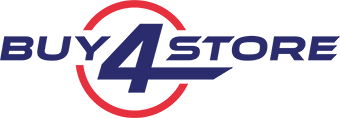Start your own business in the Mall
Starting a business on a small budget can be a fantastic adventure! It's all about embracing the thrill of making the most of what you have and finding innovative ways to bring your vision to life. With a positive mindset and a spark of creativity, you can transform limited resources into exciting opportunities and watch your dreams take flight!
Mall Business Roadmap
Identify High-Traffic Malls
Use online resources like
mallsinamerica.com
mallscenters.com
mallseeker.com
Contact the Specialty Leasing Manager
Visit the mall's website and find their "Contact Us" section to connect with the leasing manager.
Consult with the Leasing Manager
Present your business concept and get feedback. Consider their advice to ensure your concept fits the mall's audience.
Start with a Short-Term Lease
Negotiate a 1-month trial period to test your concept. If successful, consider a longer-term lease.
Negotiate Lease Terms
Ensure the rent is reasonable for both the trial and any extended lease periods.
Be Cautious with Long-Term Agreements
Include exit clauses that allow you to easily change your concept or terminate the lease if needed.
Choose the Best Display Setup
Determine whether a cart, kiosk, or store setup suits your product best by discussing options with the leasing manager.
Key Considerations
Focus on foot traffic, location visibility, target audience, income level, shopper age, and rent amount.
Optimize Product Display
Offer a wide selection and bundle deals to encourage multiple purchases.
Train Your Employees
Prepare a strong sales pitch and train employees effectively. Consider offering commission to boost sales.
Set Up POS and Security Systems
Use POS systems for sales and inventory tracking, and install cameras to monitor your business.
Expand if Successful
If the concept works, explore opportunities to open in other malls.
Let’s make
a choice here
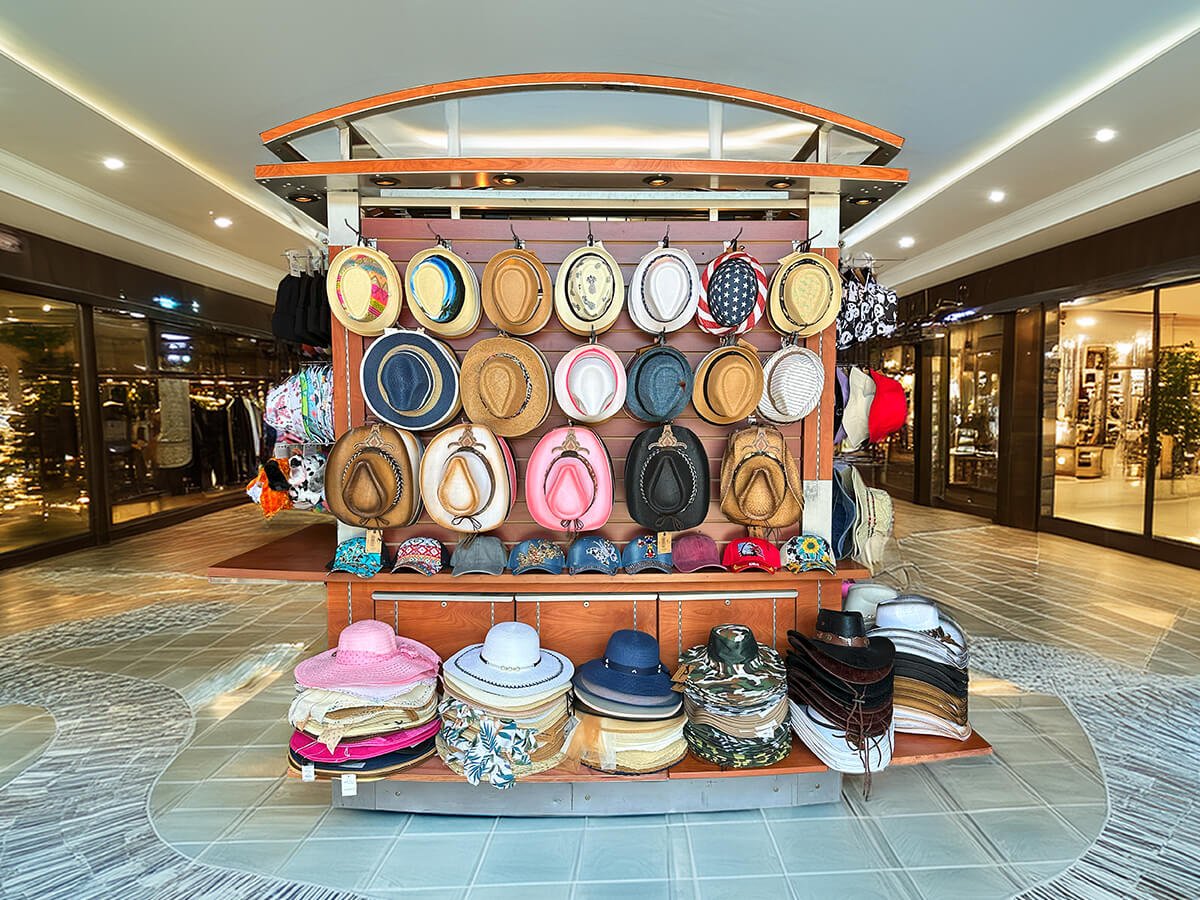

Hats Concept
According to the market research firm Statista, in 2023, the U.S. hat market was valued at approximately $2.5 billion, with a projected annual growth rate.
As of recent data, the U.S. hat market is worth several billion dollars annually. If you estimate an average price per hat, you can approximate the number of units sold. For example, if the market size is around $2.5 billion and the average price of a hat is $25, this would imply approximately 100 million hats sold in a year.
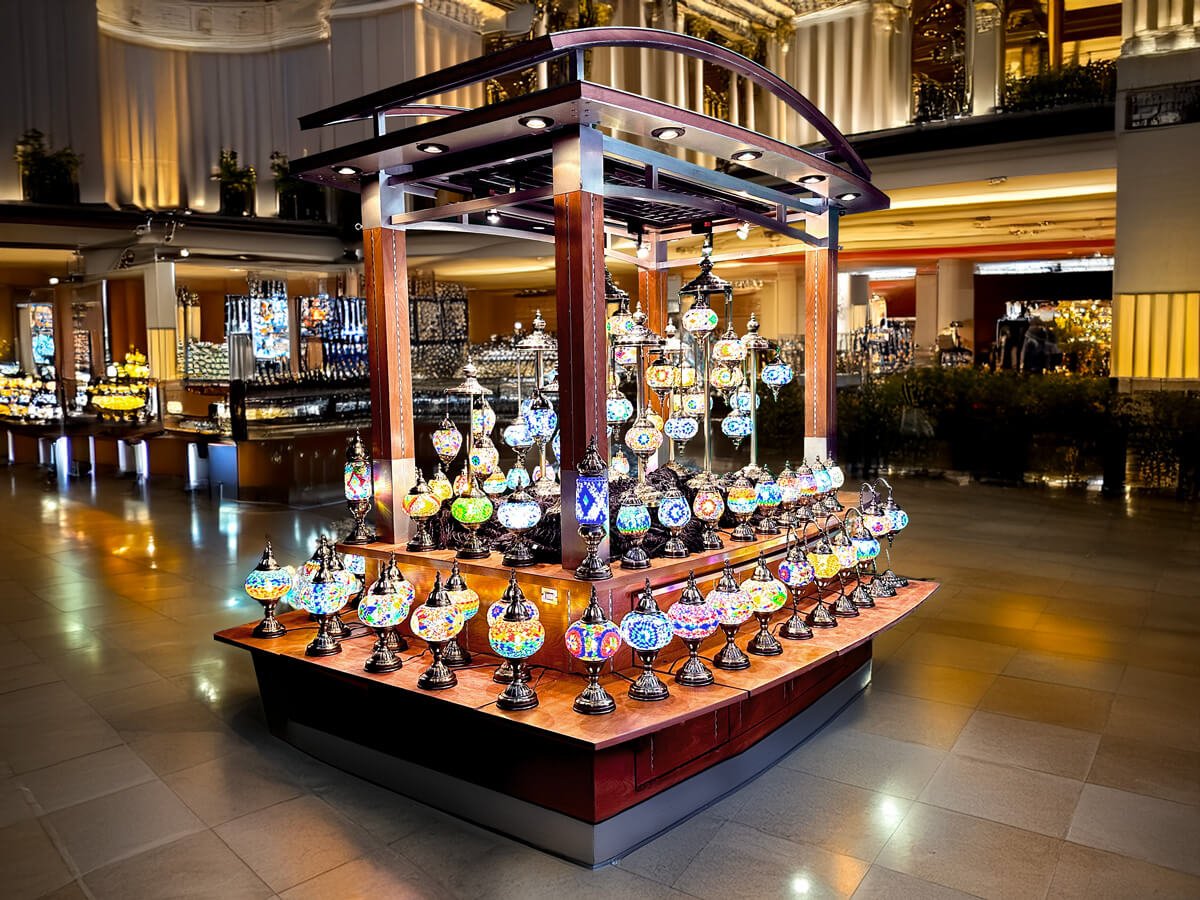

Mosaic Glass Lamps Concept
Mosaic glass lamps are known for their intricate designs and vibrant colors, making them a beautiful and unique addition to any space.
These lamps are often used as decorative pieces in homes, particularly in living rooms, bedrooms, and dining areas. They’re also popular in restaurants, cafes, and hotels. Mosaic glass lamps make for unique and cherished gifts due to their artistic value and cultural significance.
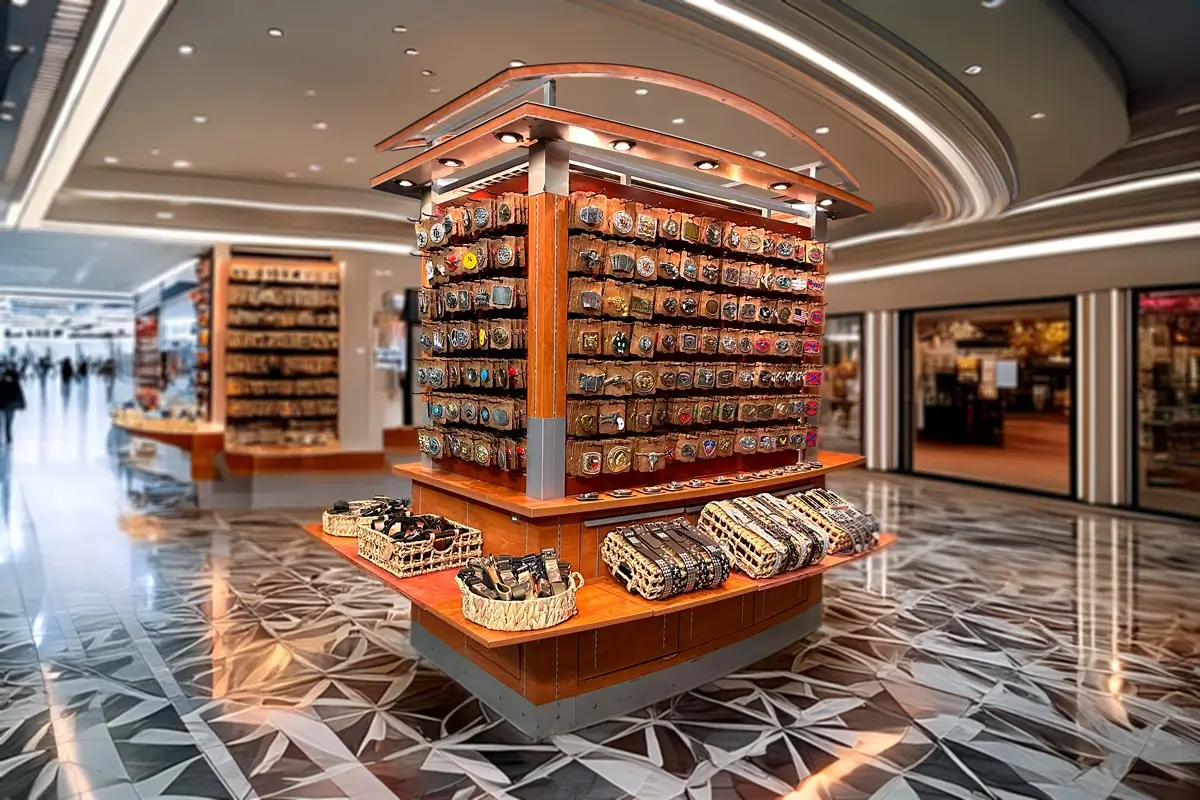

Belt Buckles Concept
Belt buckles are not just functional accessories; they have evolved into significant fashion statements, collectibles, and even symbols of identity and culture. Over time, belt buckles became symbols of status, military rank, or cultural identity, especially in regions like the American West, where they became iconic in cowboy culture.In the modern era, belt buckles have transformed into fashion accessories that allow individuals to express their style and personality.
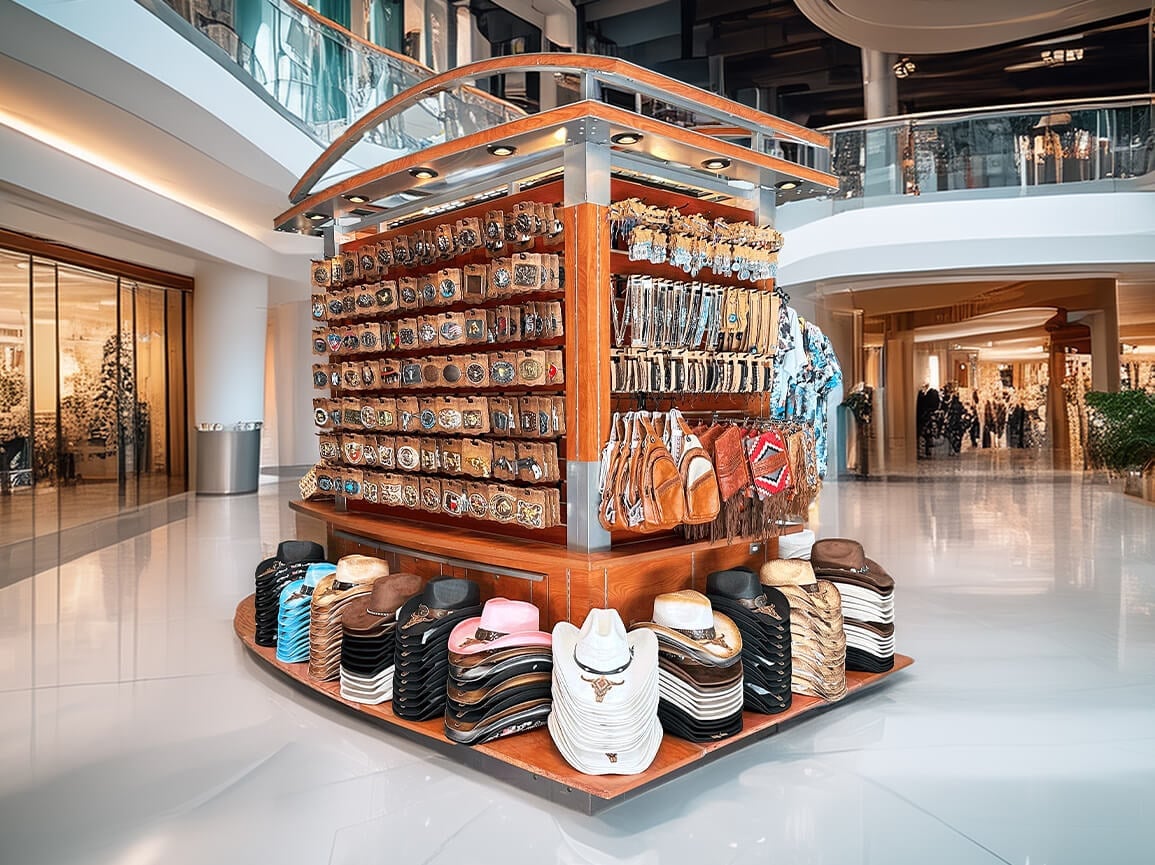

Western Products Concept
The western products market in the USA is thriving, driven by a strong cultural connection and a growing trend in western fashion and lifestyle. Products like cowboy hats, boots, belt buckles, and western apparel are not only timeless but also enjoying a resurgence, thanks to influences from country music, festivals, and popular TV shows. With consistent demand from a broad audience—ranging from fashion enthusiasts to country music fans—western products offer great profit potential. Malls are ideal locations for selling these high-margin items, which appeal to both regional customers and urban shoppers. By offering a diverse range of products at competitive prices, entrepreneurs can tap into this popular market and build a successful kiosk business.


Crochet Flowers Concept
Crochet flowers are more than just a handmade craft; they bring a sense of charm and creativity to any item they adorn. Whether used in home decor, fashion accessories, or as part of a gift, these intricate and customizable pieces have a growing appeal among customers looking for something unique and personal. The beauty of selling crochet flowers lies in their versatility - they can enhance hats, bags, clothing, or even brighten up a simple room. As trends continue to favor artisan, eco-friendly, and handcrafted products, crochet flowers are the perfect addition to your inventory. With low costs and high demand, selling these beautiful pieces can help your business stand out while offering your customers something truly special.


Balloons Concept
The balloon industry in the U.S. is a vibrant and growing market, fueled by strong demand for party decorations, event installations, and custom designs. Balloons are a central part of celebrations like birthdays, weddings, graduations, and corporate events, making them a year-round business opportunity. As consumers seek more personalized and creative event décor, the demand for unique balloon arrangements, including themed and eco-friendly options, continues to rise. With relatively low startup costs and the ability to scale quickly, the balloon business offers a profitable and flexible opportunity for entrepreneurs, whether you’re looking to operate a small kiosk or a full-scale event decoration service.
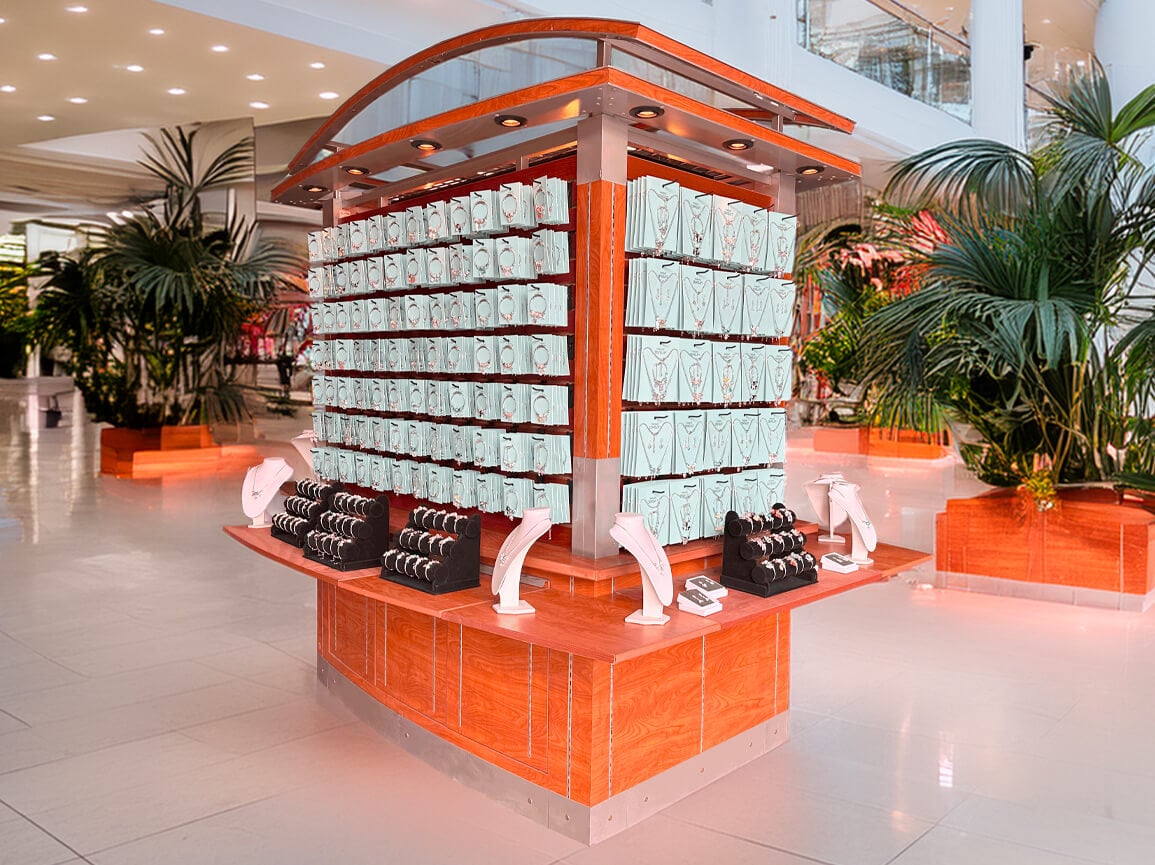

Jewelry Concept
The U.S. jewelry market is thriving, driven by demand for fashion accessories, personalized gifts, and statement pieces. From charm bracelets and elegant necklaces to trendy earrings, jewelry is a year-round best-seller, appealing to both fashion-conscious shoppers and gift buyers. Malls offer high foot traffic and impulse purchase potential, making them an ideal location for a jewelry business. Customers seek affordable, stylish, and customizable pieces, ensuring steady demand. With low startup costs, strong profit margins, and scalability, a mall jewelry business provides a flexible and lucrative opportunity, whether starting with a small kiosk or expanding into a full boutique.
More Concepts Coming Soon...
How it looks like in the Mall






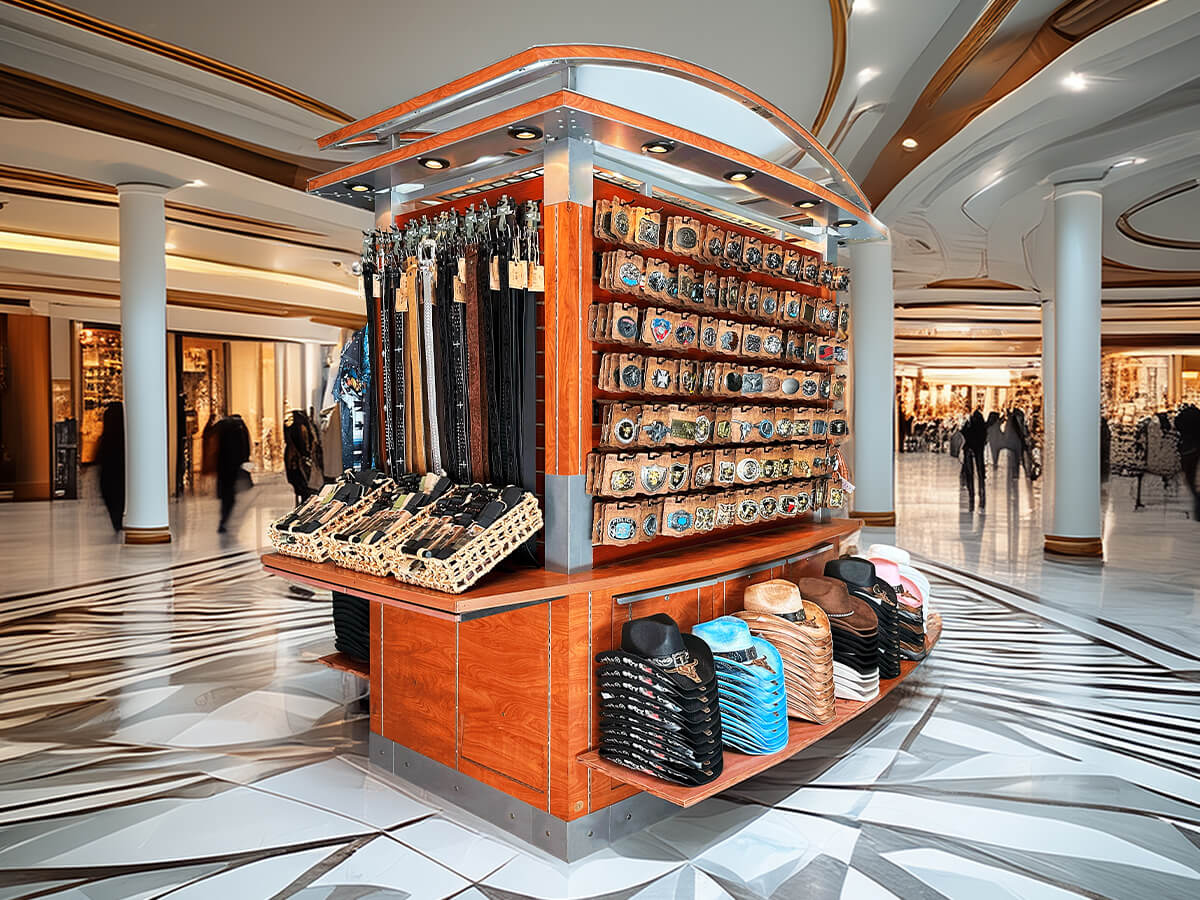

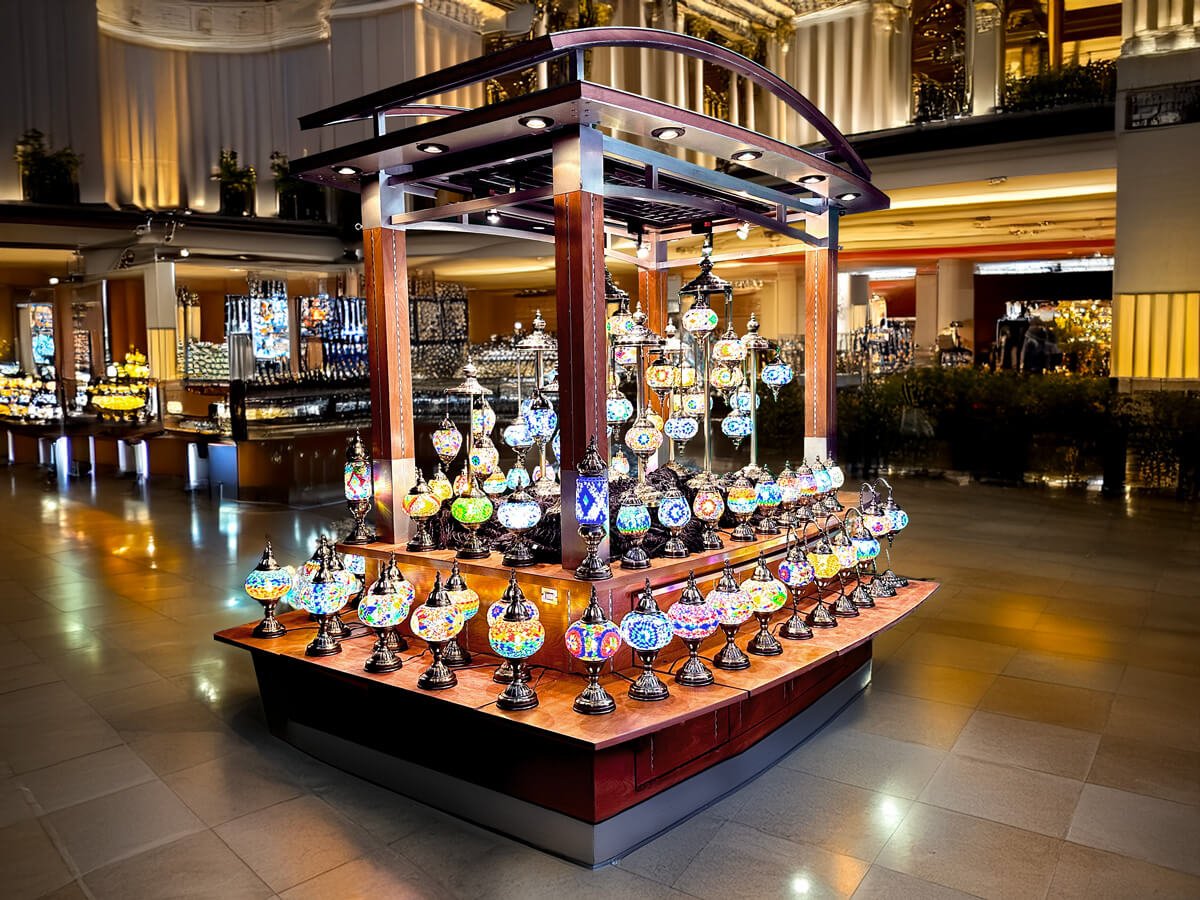

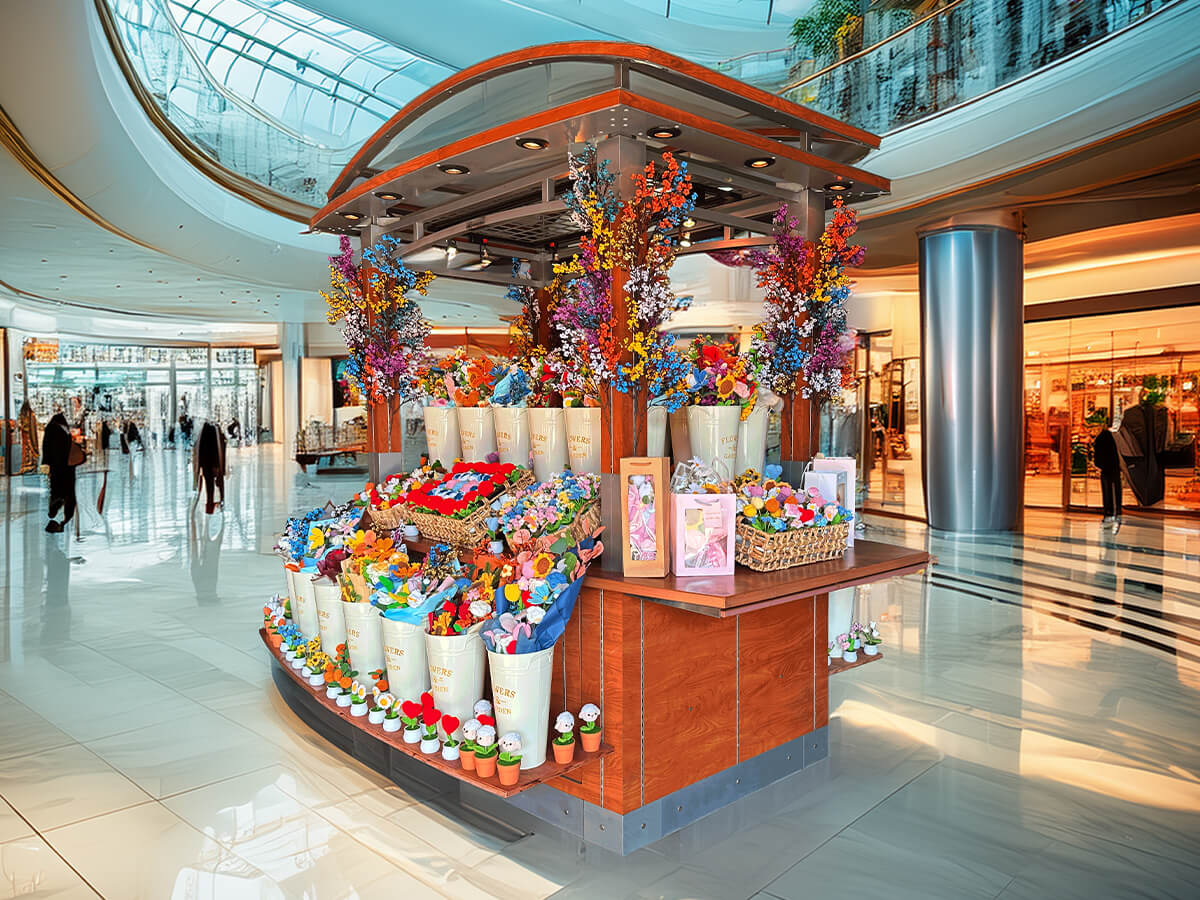

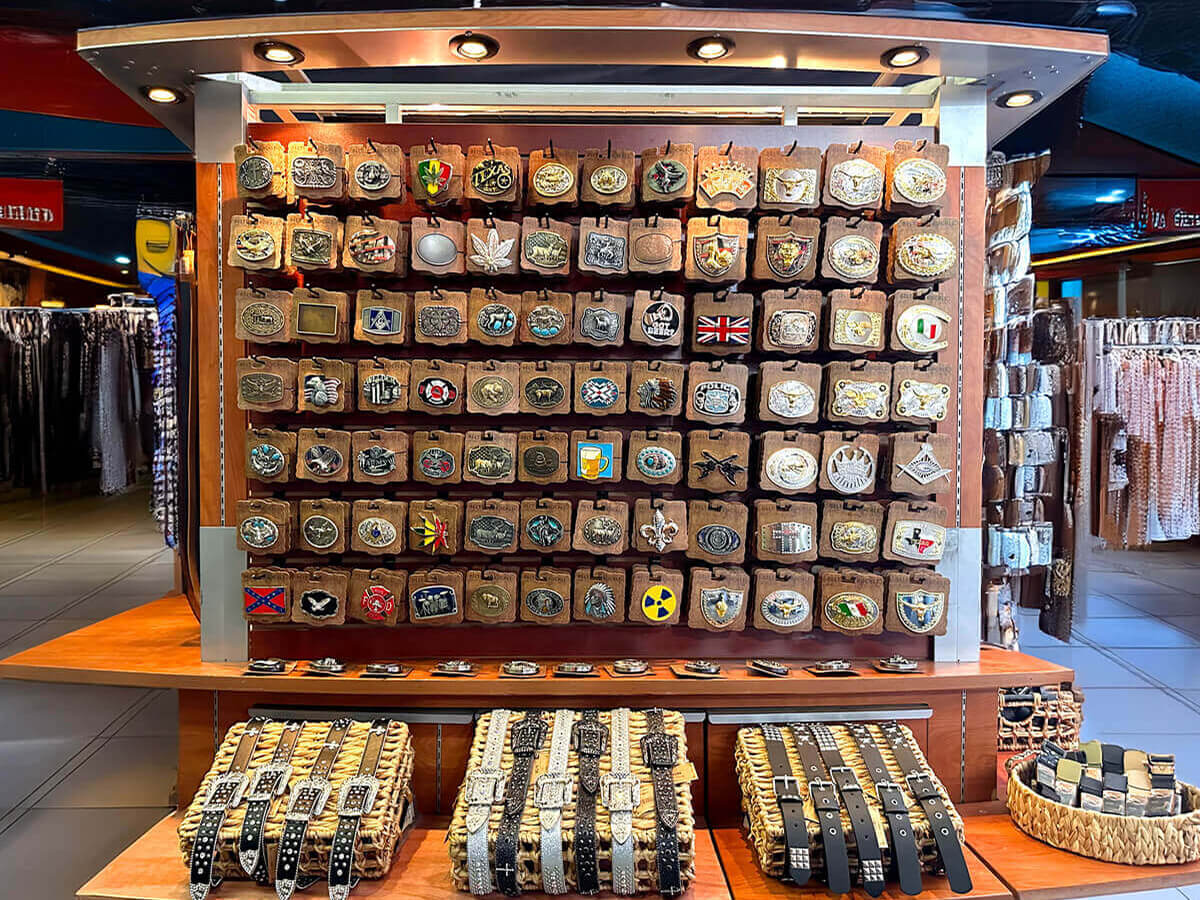

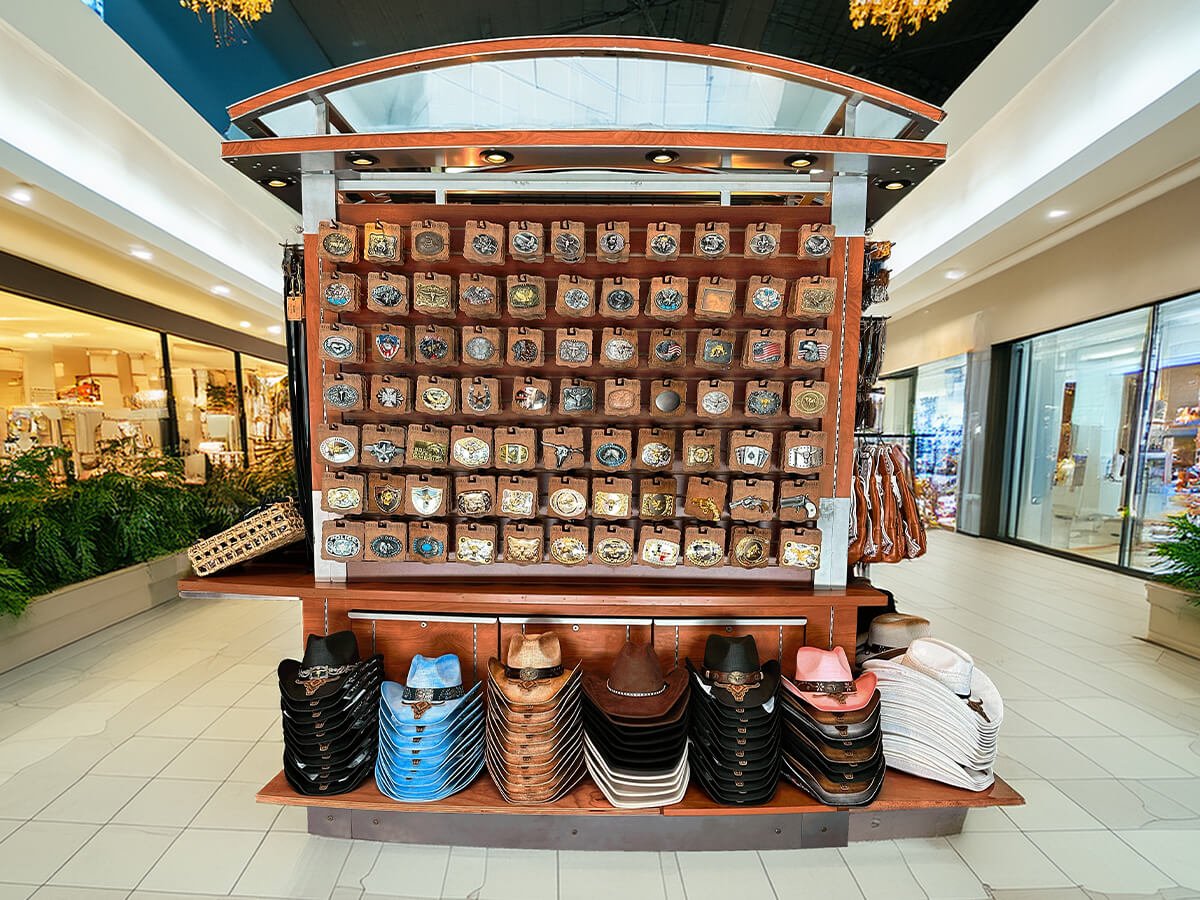

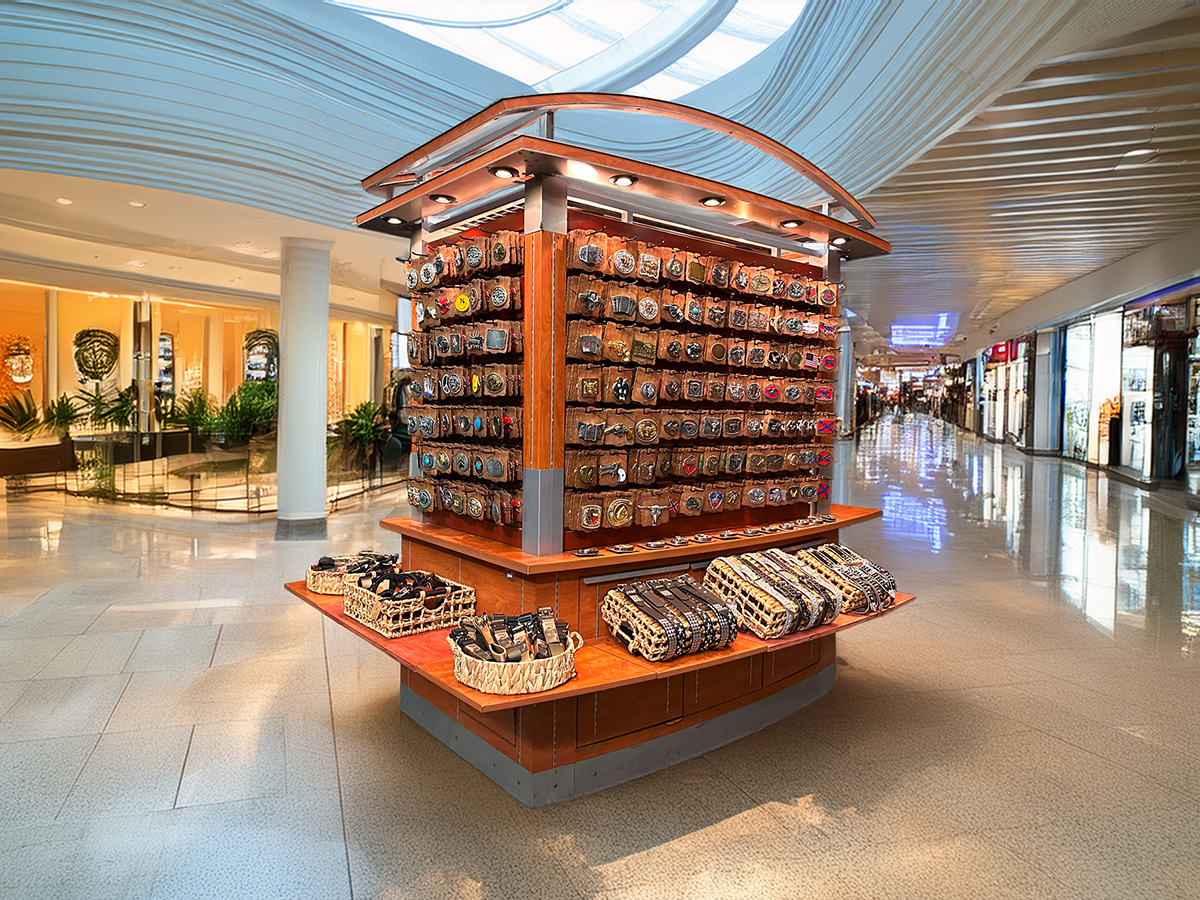



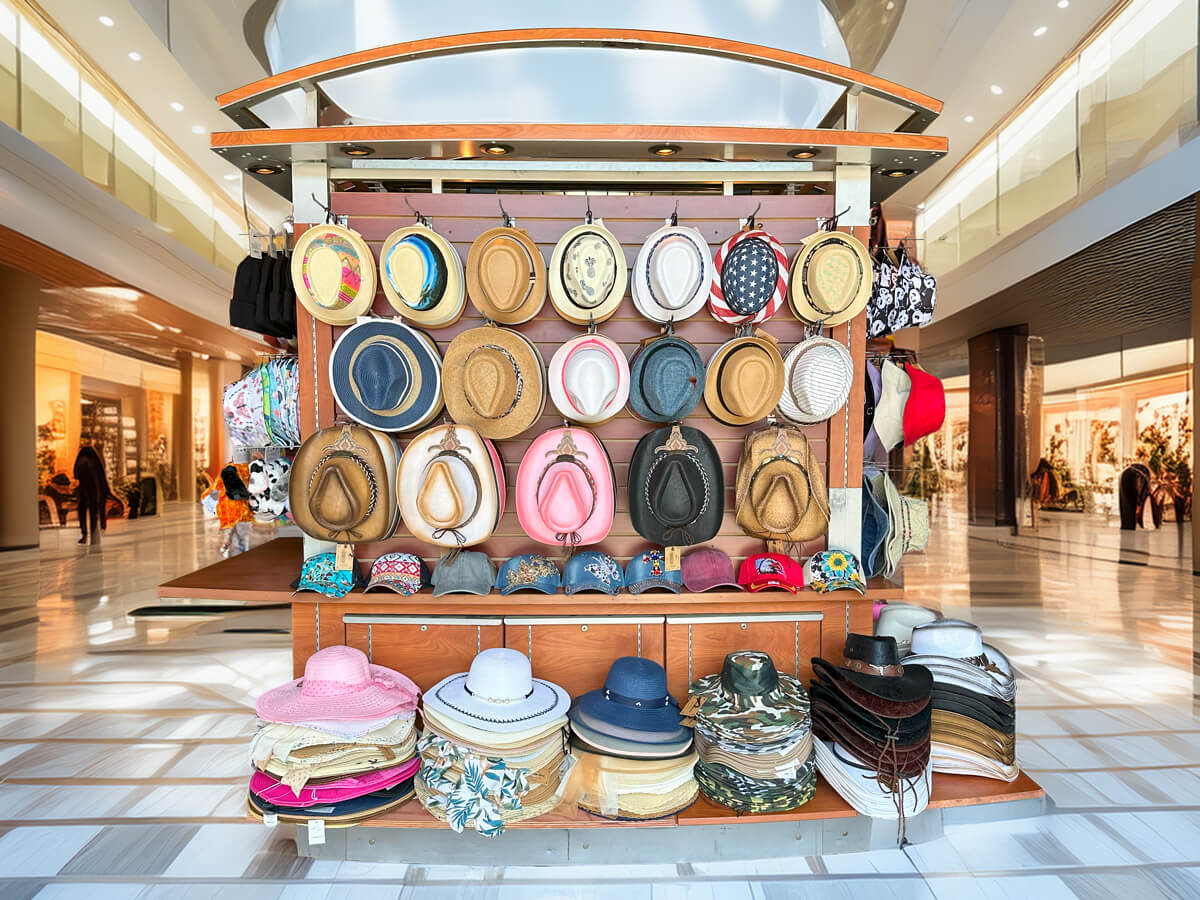

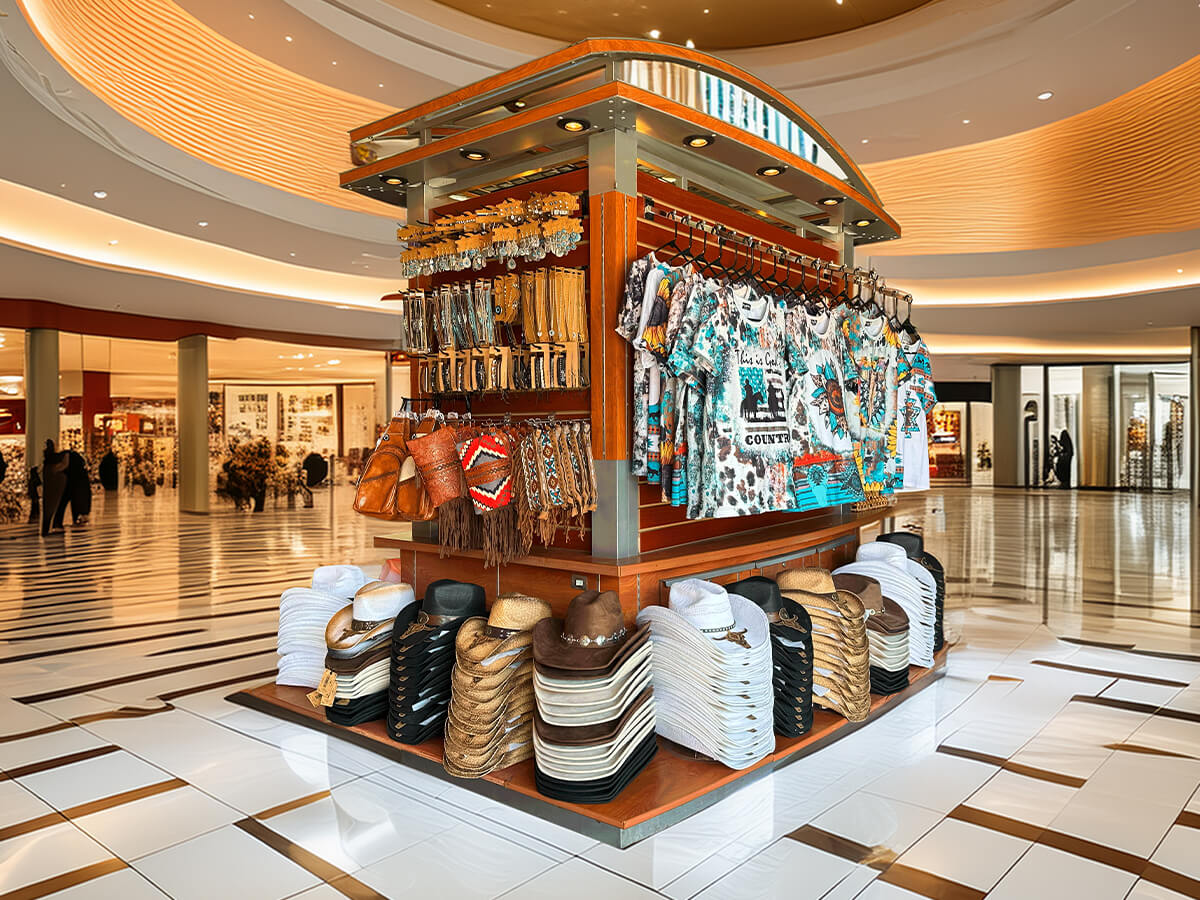

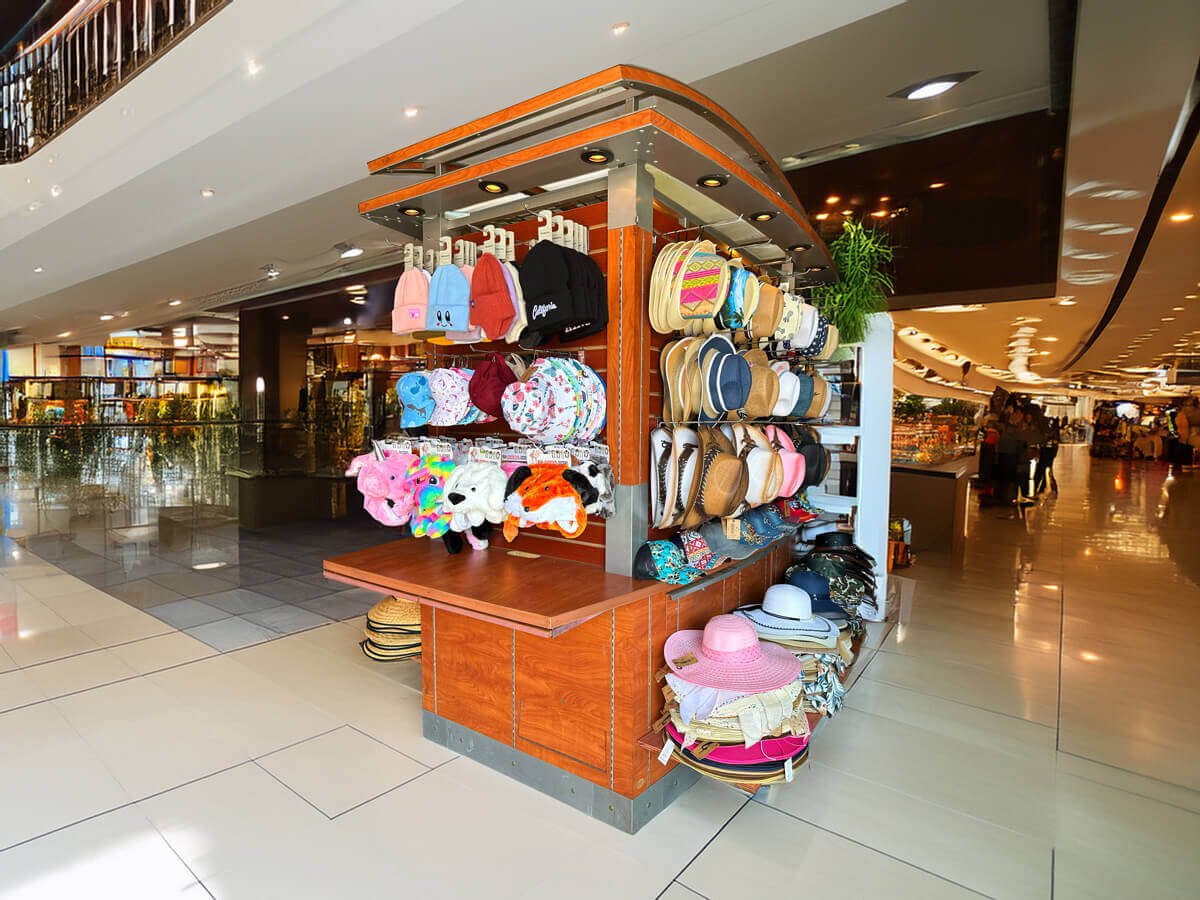

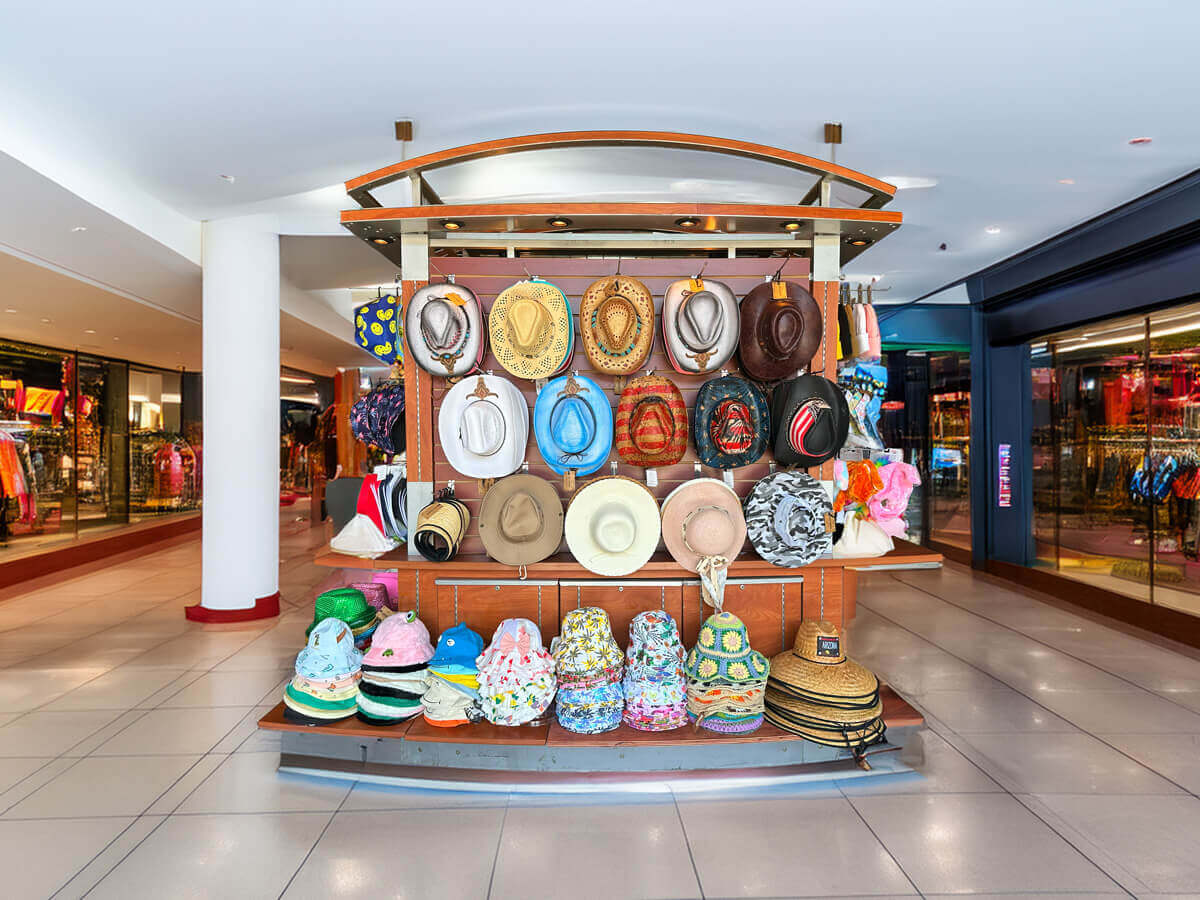

How much do I need to start my own business in the malls?
Starting a business in a mall by opening a cart or kiosk can vary in cost depending on several factors, including location, mall traffic, type of products sold, and the specific requirements of the mall. Here's a breakdown of the potential costs involved:
- 1. Rent and Leasing Costs:
Initial Rent Deposit: Malls typically require an upfront deposit, which can range from $2,000 to $10,000 or more, depending on the mall's location and foot traffic.
Monthly Rent: The monthly rent for a cart or kiosk can range from $1,000 to $5,000 or more. High-traffic malls or prime locations within a mall (e.g., near entrances or popular stores) will generally have higher rent.
- 2. Cart/Kiosk Setup Costs:
Cart/Kiosk set up: setting up a cart or kiosk can cost anywhere from $ 500 to $ 3,000
Customization and Branding: Customizing the cart with your branding, signage, and displays may cost an additional $1,000 to $2,000, depending on the complexity and quality of the materials used.
- 3. Inventory:
Initial Inventory: Depending on your product, you'll need to stock your cart or kiosk with enough inventory to cover the initial weeks or months. This could range from $2,000 to $5,000 or more, depending on the type of products you are selling (e.g., if you're selling high-margin items like jewelry, the inventory cost could be higher).
- 4. Permits and Licenses:
Business License: You will need a business license, which can cost between $50 and $500, depending on your location.
Sales Tax Permit: If required, obtaining a sales tax permit might cost an additional $50 to $100.
- Total Estimated Costs:
Low End: Around $ 5,000 to $10,000 for a basic setup in a smaller or mid-range mall.
Mid Range: Between $10,000 to $20,000 for a more established mall with good foot traffic.
High End: Up to $50,000 or more for prime locations in high-traffic malls, custom kiosks, and extensive inventory.
- Key Considerations:
Mall Traffic: High-traffic malls justify higher rents but also offer greater potential for sales.
Product Fit: Make sure your product aligns with the demographics and preferences of the mall’s shoppers.
Seasonality: Consider seasonal peaks, like holidays, where costs and sales potential may vary.
Negotiation: Rent and other terms may be negotiable, especially if the mall has open spaces they're eager to fill.
Starting a cart or kiosk in a mall can be a relatively low-cost way to enter the retail market, offering visibility and direct access to customers. By carefully planning your budget and understanding the mall’s customer base, you can set your business up for success.
What are the positive and negative aspects of running a business in a mall?
Starting a business in a mall comes with its own set of advantages and disadvantages. Here’s a breakdown:
- Positive Aspects:
High Foot Traffic: Malls typically attract large numbers of shoppers daily, increasing exposure to a broader audience.
Brand Visibility: Being in a mall can boost your brand's visibility, associating it with other established brands and retailers.
Controlled Environment: Malls offer a clean, safe, and climate-controlled environment, making it a comfortable place for customers to shop year-round.
Marketing Support: Mall management often handles marketing and promotions, which can drive additional traffic to your business.
Immediate Customer Feedback: Being in a mall allows you to interact directly with customers, providing immediate feedback on products and services.
Convenience: Malls offer various amenities like parking, food courts, and entertainment, which can encourage shoppers to stay longer and make impulse purchases.
Security: Malls generally provide security services, reducing concerns about theft and vandalism.
- Negative Aspects
High Rent Costs: Rent in malls is usually much higher than in standalone locations due to the high foot traffic and amenities provided.
Strict Contracts: Mall leases can be rigid, often requiring long-term commitments with little flexibility.
Limited Customization: Mall regulations might restrict how you can design and decorate your store or cart, limiting branding opportunities.
Competition: Being surrounded by other retailers, including larger chains, can make it harder to stand out and capture customer attention.
Dependence on Mall Traffic: Your business success is heavily tied to the mall’s overall traffic. If the mall struggles, your business might too.
Operational Hours: Malls typically have fixed hours of operation, which means your business must be open during these times, increasing labor costs.
Seasonality: Some malls may experience fluctuating traffic depending on the time of year, with peak times around holidays and quieter periods during off-seasons.
In summary, while malls offer excellent opportunities for visibility and customer interaction, the higher costs and potential restrictions need to be carefully considered.
What are the key strategies for achieving success when running a business in a mall?
To be successful in a mall business, here are some key strategies:
- 1. Choose the Right Location
Prime Spot: Opt for a location with high foot traffic, near anchor stores, entrances, or food courts.
Target Audience: Position your business where your target customers are likely to be, such as near complementary stores.
- 2. Offer Unique Products
Stand Out: Sell products that are unique or difficult to find elsewhere in the mall. This can attract shoppers who are looking for something different.
High Demand: Focus on products that have a proven demand but are not oversaturated in the mall.
- 3. Exceptional Customer Service
Personal Interaction: Train staff to engage with customers warmly and helpfully. Personalized service can lead to repeat customers.
Loyalty Programs: Implement loyalty programs or incentives to encourage repeat business.
- 4. Effective Merchandising
Attractive Displays: Use eye-catching displays to draw in passersby. Change your displays regularly to keep the store looking fresh.
Seasonal Themes: Incorporate seasonal themes into your displays to resonate with mall events or holidays.
- 5. Leverage Mall Marketing
Participate in Events: Engage in mall-wide promotions, sales events, or holiday activities to increase visibility.
Collaborate with Mall Management: Work with mall management on joint marketing efforts, such as digital campaigns, social media, or mall directories.
- 6. Competitive Pricing
Value for Money: Ensure your pricing is competitive with other mall retailers. Offering occasional discounts or bundles can attract more customers.
Perceived Value: Enhance the perceived value of your products through branding, packaging, and presentation.
- 7. Adapt to Trends
Stay Updated: Keep up with retail trends and adjust your product offerings accordingly. Seasonal trends, pop culture, and local preferences can drive sales.
Flexible Inventory: Be ready to change your inventory based on what's trending or in demand within the mall.
- 8. Optimize Operations
Efficient Staffing: Ensure you have the right number of staff during peak hours and manage labor costs effectively.
Inventory Management: Keep track of stock levels to avoid overstocking or running out of popular items.
- 9. Customer Engagement
Collect Feedback: Regularly gather customer feedback to improve your offerings and service.
Build a Community: Use social media to create a community around your brand, offering updates, promotions, and engaging content.
- 10. Manage Costs Carefully
Negotiate Rent: Try to negotiate favorable lease terms, especially if you're a small business or new to the mall.
Control Overheads: Keep a close eye on all operating expenses, including utilities, staffing, and supplies.
- 11. Analyze Performance
Track Sales Data: Regularly analyze sales data to understand what's working and where you can improve.
Adjust Strategies: Be willing to adapt your strategies based on performance data, customer feedback, and market trends.
By focusing on these areas, you can enhance your chances of success in a mall business environment.
What are the best ways to identify and capitalize on trending products to sell in malls?
- 1. Stay Updated with Market Trends
Trend Forecasting Websites: Use resources like TrendHunter, WGSN, or Pinterest Trends to stay ahead of what’s popular.
Social Media Monitoring: Follow influencers and trending hashtags on platforms like Instagram, TikTok, and Twitter to spot emerging products.
- 2. Leverage Data Analytics
Google Trends: Use Google Trends to analyze search data and identify rising product categories.
E-commerce Platforms: Monitor best-seller lists on platforms like Amazon, Etsy, and eBay to see what's currently in demand.
- 3. Attend Trade Shows and Expos
Industry Events: Participate in trade shows and expos to discover new products and network with suppliers.
Mall-Specific Expos: Look for events focused on retail and mall-specific trends to find products that resonate with mall shoppers.
- 4. Collaborate with Suppliers
Supplier Relationships: Build strong relationships with suppliers who can provide insights into upcoming products.
Exclusive Deals: Negotiate exclusive deals for new or limited-edition items that aren’t widely available yet.
- 5. Customer Feedback and Testing
Surveys and Polls: Conduct surveys or polls to understand what your target customers are interested in.
Test Runs: Introduce small quantities of new products to gauge customer interest before committing to larger orders.
- 6. Competitor Analysis
Mall Visits: Regularly visit other stores in your mall and nearby malls to see what’s selling well.
Online Competitors: Keep an eye on online competitors who might be introducing new trends sooner.
- 7. Seasonal and Cultural Trends
Seasonal Products: Pay attention to seasonal trends, such as holiday-themed items or back-to-school products.
Cultural Events: Capitalize on local or global cultural events that could influence shopping behavior, like sports events or movie releases.
- 8. Engage with the Mall’s Marketing
Mall Events: Participate in mall-sponsored events or promotions that highlight trending products.
Collaborate on Promotions: Work with the mall’s marketing team to create buzz around new or trendy products in your store.
- 9. Use Technology
AI and Machine Learning: Some platforms use AI to predict trends based on large datasets, which can help you identify products that will be popular soon.
Inventory Management Tools: Use inventory management tools that track sales patterns and suggest reordering popular items.
How can I effectively grow my business within a mall?
- 1. Enhance Customer Experience
Exceptional Service: Focus on providing outstanding customer service that goes beyond expectations. Happy customers are more likely to return and recommend your business to others.
Personalization: Use customer data to personalize shopping experiences, offering tailored recommendations and special offers.
- 2. Expand Product Offerings
Diverse Inventory: Introduce new products or expand your current offerings to attract a broader audience.
Seasonal Products: Regularly update your inventory with seasonal or trending items to keep customers coming back to see what’s new.
- 3. Strengthen Your Brand
Consistent Branding: Ensure your brand messaging and visuals are consistent across all channels, from your physical store to online presence.
Engage in Marketing: Invest in marketing strategies that reinforce your brand, such as social media campaigns, email newsletters, and collaborations with influencers.
- 4. Optimize Your Store Layout
Attractive Displays: Create visually appealing displays that capture the attention of mall visitors and encourage impulse buys.
Efficient Layout: Design your store layout to maximize space and make it easy for customers to find what they need.
- 5. Leverage Mall Events and Promotions
Participate in Events: Get involved in mall-wide events or promotions to increase foot traffic to your store.
Exclusive Deals: Offer special discounts or promotions during these events to attract new customers.
- 6. Build Strong Relationships
Collaborate with Other Retailers: Partner with other businesses in the mall for cross-promotions or joint events that can drive traffic to each other’s stores.
Mall Management: Maintain a good relationship with mall management to stay informed about upcoming opportunities or changes.
- 7. Improve Operational Efficiency
Inventory Management: Use inventory management tools to keep track of stock levels and ensure popular items are always available.
Cost Control: Regularly review your expenses and find ways to reduce costs without compromising quality or service.
- 8. Expand Your Customer Base
Loyalty Programs: Implement or enhance loyalty programs to encourage repeat business and reward your most loyal customers.
Targeted Marketing: Use targeted marketing campaigns to reach new customers within the mall’s demographic.
- 9. Utilize Online Channels
E-commerce Integration: If you don’t already have an online store, consider setting one up to reach customers who prefer to shop online.
Social Media Presence: Actively engage with customers on social media, showcasing new products, promotions, and store events.
- 10. Analyze and Adapt
Monitor Performance: Regularly analyze sales data and customer feedback to understand what’s working and where there’s room for improvement.
Be Adaptable: Be willing to adapt your strategies based on market trends, customer preferences, and performance insights.
How can I effectively manage and oversee my employees working in the malls?
- 1. Set Clear Expectations
Job Descriptions: Clearly define roles and responsibilities so employees know what is expected of them.
Performance Standards: Establish standards for customer service, sales targets, and daily tasks. Make sure employees understand the goals they need to meet.
- 2. Provide Proper Training
Initial Training: Offer comprehensive training on product knowledge, sales techniques, customer service, and handling transactions.
Ongoing Training: Regularly update training to keep employees informed about new products, sales strategies, and mall policies.
- 3. Use Technology for Oversight
POS Systems: Implement a Point of Sale (POS) system that tracks sales and inventory in real-time, allowing you to monitor employee performance.
Cameras: Consider installing security cameras to oversee the cart and ensure employees are following protocols.
- 4. Regular Check-Ins
Daily or Weekly Meetings: Hold regular meetings to discuss performance, address any issues, and provide feedback.
On-the-Spot Visits: Make unannounced visits to the cart to observe operations and interact with employees.
- 5. Establish Accountability
Performance Reviews: Conduct regular performance reviews to evaluate employee productivity and adherence to standards.
Incentive Programs: Introduce incentive programs to motivate employees to meet or exceed targets, such as bonuses for hitting sales goals.
- 6. Promote a Positive Work Environment
Open Communication: Foster an environment where employees feel comfortable sharing ideas, concerns, and feedback.
Recognition: Recognize and reward employees for their hard work and achievements, which can boost morale and productivity.
- 7. Implement a Reporting System
Daily Reports: Require employees to submit daily reports summarizing sales, customer interactions, and any issues faced during their shift.
Incident Reporting: Set up a process for reporting and addressing any incidents or problems that arise.
- 8. Empower and Trust Your Employees
Delegation: Give employees a sense of ownership by delegating responsibilities and allowing them to make decisions within certain guidelines.
Trust: While oversight is important, also show that you trust your employees by not micromanaging every aspect of their work.
- 9. Address Issues Promptly
Immediate Feedback: If you notice any issues, address them immediately with clear and constructive feedback.
Disciplinary Actions: If necessary, have a clear disciplinary process in place for dealing with repeated issues or misconduct.
- 10. Encourage Teamwork
Collaboration: Encourage employees to work together and support each other, which can lead to a more efficient and positive work environment.
Team Goals: Set team-based goals to foster a sense of collective responsibility and success.
